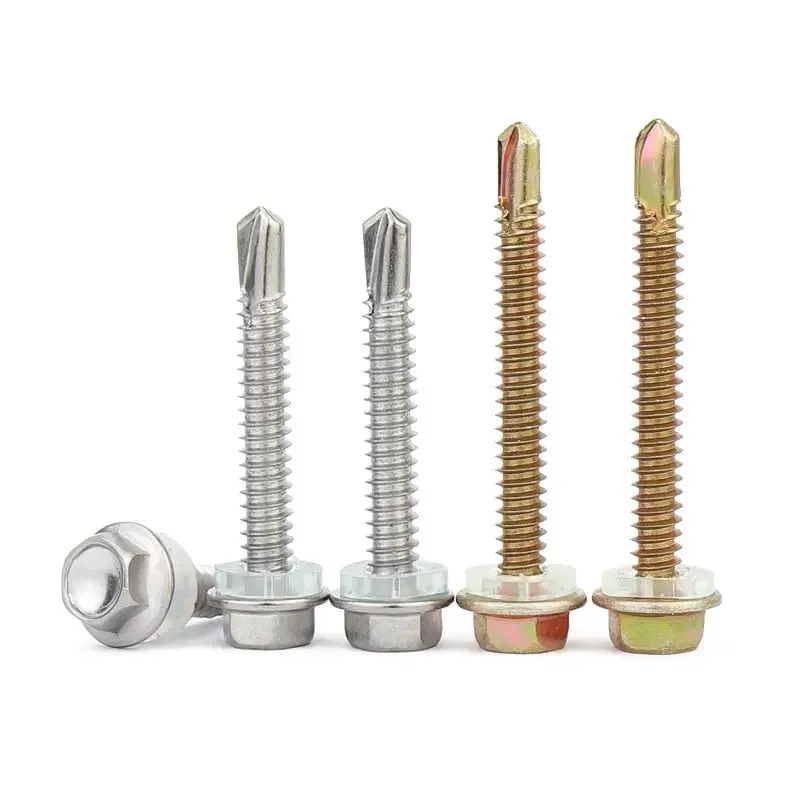

Different Types of Self-Tapping Screws and Their Uses in Construction and Repair
Th12 . 14, 2024 00:40 Back to list
Different Types of Self-Tapping Screws and Their Uses in Construction and Repair
Understanding Self-Tapping Screw Types A Comprehensive Guide
Self-tapping screws are essential fasteners used in a wide array of applications, from construction to electronics. Their ability to create their own hole in a material allows for faster and more efficient assembly. This article will explore various types of self-tapping screws, their specific uses, and the materials they are made from, providing a thorough understanding for both professionals and DIY enthusiasts.
What Are Self-Tapping Screws?
Self-tapping screws are designed to form their own thread as they are driven into the material. This is achieved by having a sharp pointed end that cuts through the material. They are particularly useful when working with softer materials such as plastic, wood, and thin sheet metals. Unlike standard screws, which require pre-drilled holes, self-tapping screws eliminate the need for this extra step, saving time and effort during assembly.
Types of Self-Tapping Screws
1. Sheet Metal Screws As the name suggests, these screws are primarily used for fastening thin sheets of metal together. Sheet metal screws have a sharp point and often feature a thread design that extends all the way to the head. They are available in various head styles, including pan and hex, to accommodate different tools and applications.
2. Wood Screws Designed specifically for use in wood, these screws have a coarse thread that allows for better grip in wooden materials. They typically feature a sharp point and a flat or oval head. Wood screws are available in various lengths and diameters, making them versatile for different woodworking projects.
3. Plastic Screws Made from durable plastic materials, these screws are ideal for fastening plastic components together without risking the fracture of the material. They often feature a unique thread design to ensure a secure fit. Plastic screws are commonly used in electronics and automotive applications where metal screws could induce corrosion.
4. Self-Drilling Screws These are a subtype of self-tapping screws that include a drill bit tip, allowing them to penetrate harder materials such as metal without the need for a pre-drilled hole. They are particularly useful in construction and metal fabrication due to their efficiency. Available in different sizes and lengths, self-drilling screws can handle various thicknesses of metal sheets.
self tapping screw types

5. Lag Screws Also known as lag bolts, these heavy-duty screws are designed for fastening wooden structures. With a hex head and coarse thread, lag screws provide a secure hold in structural applications like decks and framing. They usually require a pre-drilled hole, but their high load-bearing capacity makes them invaluable in construction.
6. Hex Screws These screws have a hexagonal head and are driven with a wrench. They are used extensively in mechanical applications and when fastening metal parts together. Hex screws can come in both self-tapping and standard types, and their design helps in applications that require high torque.
7. Self-Tapping Machine Screws These screws are primarily used in applications where the screw has to be repeatedly installed and removed. They feature a thread that allows for greater tensile strength and are often used in machinery and equipment.
8. Set Screws Used primarily to hold an object in place within or against another object, set screws are typically installed internally and are often found in mechanical assemblies. They can be self-tapping and feature a flat end that does not protrude from the assembly.
Material Considerations
Self-tapping screws can be made from various materials, each offering different benefits. Common materials include stainless steel, which provides corrosion resistance; carbon steel, known for its strength; and zinc-plated steel, which combines affordability with some resistance to rust. For plastic screws, different grades of plastic, such as nylon, are used to provide the necessary strength and durability.
Conclusion
Understanding the different types of self-tapping screws and their applications can significantly enhance project efficiency and durability. Whether you are a professional tradesperson or a DIY enthusiast, selecting the right screw for your specific needs is crucial. By familiarizing yourself with the various types, materials, and applications, you can ensure that your fastening solutions are both effective and long-lasting. From sheet metal assembly to woodworking projects, self-tapping screws are versatile tools that facilitate a range of tasks with ease.
Latest news
-
Hot Dip Galvanized Bolts-About LongZe|High Strength, Corrosion Resistance
NewsJul.30,2025
-
High-Strength Hot Dip Galvanized Bolts - Hebei Longze | Corrosion Resistance, Customization
NewsJul.30,2025
-
Hot Dip Galvanized Bolts-Hebei Longze|Corrosion Resistance&High Strength
NewsJul.30,2025
-
High-Strength Hot-Dip Galvanized Bolts-Hebei Longze|Corrosion Resistance&High Strength
NewsJul.30,2025
-
Hot Dip Galvanized Bolts-Hebei Longze|Corrosion Resistance&High Strength
NewsJul.30,2025
-
Hot Dip Galvanized Bolts - Hebei Longze | Corrosion Resistance, High Strength
NewsJul.30,2025

